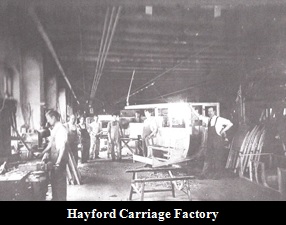About Newton, New Hampshire
Small tree-lined Newton, NH is nestled on the Massachusetts border in Rockingham County and is home to about 4,650 residents. Newton is a quiet New England community with white church steeples, and comprised of beautiful ponds, rivers, wooded areas and quiet neighborhoods. Of the total 9.9 square mile area, “villages” or neighborhood area names in the town include Newton Junction, Rowes Corner, Sargent Corner, and Crane Crossing.
Newton offers its residents easy access to Routes 107, 108, 111, and 125 from anywhere in town and is located close to Routes 101, 495, and I95. The town offers the best in rural living with close proximity to the ocean or mountains and an excellent school system, all less than an hour from Boston.
(* An excerpted chronology of Newton in the 18th & 19th centuries)
The area now known as Newton, NH was populated in the early 17th century. The general area was part of a 1639 land grant by England to a hardy band of settlers to form New Salisbury (Amesbury). The area was settled circa 1700 and known as Amesbury Newtown.
In 1723 the present Newton area was part of Salisbury, MA. From 1724 to 1741 it was part of Amesbury, MA. In 1742 it was part of South Hampton, MA. That same year the MA and NH boundaries changed and South Hampton, MA became South Hampton, NH.
In 1749 the town, as it now stands, was incorporated by Colonial Governor Benning Wentworth (1741 – 1766) as “Newtown”, simply because it was a new town. The original charter is stored in the safe in the Selectman’s Office at the town hall.
The Baptist Society of Newton, founded in circa 1752, is said to be the oldest Baptist Society in New Hampshire. The first NH Baptist Church was built about the same time on Brimstone Hill which was located at what is now Smith Corner Rd. & Peaslee Crossing Rd.
It is believed that the first Newton town meeting was held on March 11, 1755 at an inn owned by Mr. Sargent Heath.
In 1834 famed poet John Greenleaf Whittier wrote the poem “Suicide Pond”. The poem told the story of Hannah Chase of Newtown who drowned herself on June 18, 1819, the eve of her wedding day. The story that comes down to us says she was wearing her wedding dress, a pearl necklace, and a ring. Her reason for her suicide remains a mystery despite the speculation that ran through the town. One story that circulated was that it was because her father did not approve of her husband to be. She is buried in Newton in the Chase Family burial ground which is located on private property.
In 1846 the New Hampshire Legislature voted to contract the name of the town to Newton.
During the Industrial Revolution, circa 1820 – 1870, Newton had a population of approximately 850 residents. Some of the local businesses were, 5 Merchants, 3 hotels, 11 people in the building trades, 2 physicians, and several taverns.
The largest industry in town was the Carriage Industry. In the late 1800’s there were six carriage makers. The largest of these was Edward Hayford & Son located on the corner of Highland and S. Main Sts. Hayford shipped approximately 1,000 carriages per year around the United States. The Newton Historical Society owns two original Hayford Carriages, which are stored at one of their two museums, the Marshall House Museum. |
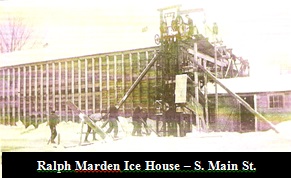
Another large industry in Newton was the Ice Industry. There were two major ice companies operating in Newton over the years. The largest was the Boston Ice Co. located on Country Pond at the end of Bartlett St. and in later years, Ralph Marden’s Ice Co. located on S. Main Street. Many of the ice tools used at these two companies are in the possession of the Historical Society. |
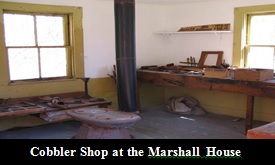
The shoe industry, which was operated from small individual cobbler shops, also thrived in Newton in the 1800’s. With the advent of the Industrial Revolution, small cobbler shops gave way to shoe factories. There are several 19th century cobbler shops in Newton. All but one are located on private property. One can be visited and is located at the Town’s Marshall House Museum on Wallace St. |
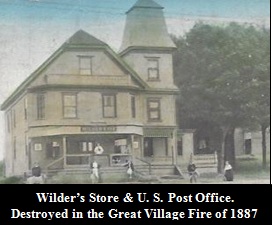
In 1887 disaster struck Newton in the form of the “Great Village Fire”. The fire started in the barn of the Traveler’s Inn on South Main St. Travelling both North and South, it destroyed the Hayford Carriage factory, Wilder’s Store, the Post Office, and the Newton Town Hall. It also destroyed twelve private residences. Fire crews came from Merrimac & Haverhill, MA to battle the fire, as Newton did not have a fire department at the time. |

Two years after the “Village Fire”, in 1889, a new Town Hall was built. It stands on the same spot as the previous building on Rte. 108 and is used to this day. That year also saw the formation of Newton’s first Fire Dept. |
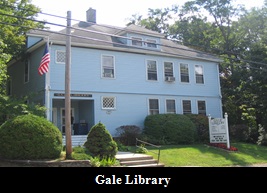
In 1893 Newton founded its own free, public library. It was first located in the Selectman’s office in the town hall. After having a few different homes, in 1978 it was moved to the vacated Village School at 16 South Main Street where it operates to this day. |
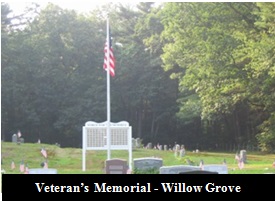
Over the decades many Newton residents have served in the U. S. military. At the Willow Grove Cemetery, on the back of the World War II Veteran’s Memorial, there is a list of Newton residents who enlisted into the military dating back to the French & Indian War in 1754. The list also identifies those veterans who are buried in Newton Cemeteries. |
As the 20th century dawned, the population of Newton increased, but manufacturing in the town decreased. Though there are a number of small commercial businesses and some light industry in Newton, the town has basically become a “bedroom community”. This is evident by the fact that there is not a single traffic light in town and the majority of residents leave town each morning to go to their jobs and return to their families each evening. Many of these residents work in neighboring Massachusetts.
To obtain more information about Newton’s interesting history, contact the Newton Historical Society at newtonhistoricalsoc@comcast.net or visit its web site at newtonhistoricalsociety.org.
The society also has a limited supply of the town’s 250th Anniversary booklets, which were printed in 1999, that will give you a more in depth look at the town’s history.
* Source: Newton Historical Society


